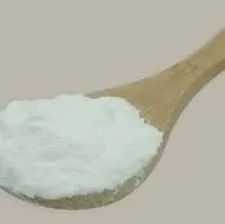The Role of Chemicals in RO Water Plants
Reverse Osmosis (RO) is a widely used water purification technology that effectively removes impurities from water, making it suitable for various applications including drinking, industrial processes, and agricultural use. One of the critical aspects of operating an RO water plant is the usage of specific chemicals that help enhance the efficiency and longevity of the system. In this article, we will explore the key chemicals used in RO water plants and their functions.
1. Antiscalants
One of the major challenges faced in RO systems is scaling, which occurs when dissolved minerals precipitate and form solid deposits on the membranes. To prevent this, antiscalants are employed. These are chemical agents that inhibit the formation of scale by disrupting the crystallization process of minerals like calcium carbonate and sulfate. By keeping these minerals in a soluble state, antiscalants significantly enhance the operational lifespan of RO membranes and reduce the need for frequent cleaning and maintenance.
Over time, biofouling and scaling can still accumulate on RO membranes, necessitating regular cleaning. Acid cleaners, often consisting of citric acid or hydrochloric acid, are used to remove scale and mineral deposits. These acids work by breaking down the bonds between the membrane surface and the scale, facilitating easier removal. Regular maintenance using acid cleaners helps maintain optimal flow rates and system performance, ensuring that the purified water meets the required quality standards.
3. Biocides
ro water plant chemicals

Biofouling is another significant concern in RO water systems, where organic matter, algae, and bacteria can proliferate on the membrane surface, affecting its performance. To combat this issue, biocides are introduced into the system. These chemicals are designed to eliminate microbial organisms before they can form biofilms, ensuring the longevity of the membranes and the integrity of the water being produced. Commonly used biocides include chlorine, chlorine dioxide, and quaternary ammonium compounds. Care must be taken in selecting the appropriate biocide, as some may be detrimental to the integrity of RO membranes.
4. pH Adjusters
The effectiveness of RO membranes can be influenced by the pH levels of the feed water. In certain cases, adjusting the pH may be necessary to optimize membrane performance and longevity. pH adjusters, such as sodium hydroxide or sulfuric acid, can be used to create the ideal conditions for the RO process. Maintaining an appropriate pH helps mitigate scaling and fouling, leading to more efficient water production.
5. Flocculants and Coagulants
In some applications, especially those involving surface water, the feed water may contain suspended particles and colloids that can clog membranes. Flocculants and coagulants are used to aggregate these particles, facilitating their removal before the water enters the RO system. By clarifying the feed water, these chemicals help improve the overall efficiency and efficacy of the purification process, extending the life of the membranes.
Conclusion
The use of chemicals in RO water plants is essential for ensuring optimal performance, system longevity, and water quality. From antiscalants that prevent scaling to biocides that eliminate unwanted microorganisms, each chemical plays a crucial role in maintaining an efficient and effective water purification process. As the demand for purified water continues to rise, understanding and managing these chemicals will be vital for the future of RO technology. By employing the right chemical treatments, RO water plants can operate efficiently, providing high-quality water while minimizing maintenance costs.

